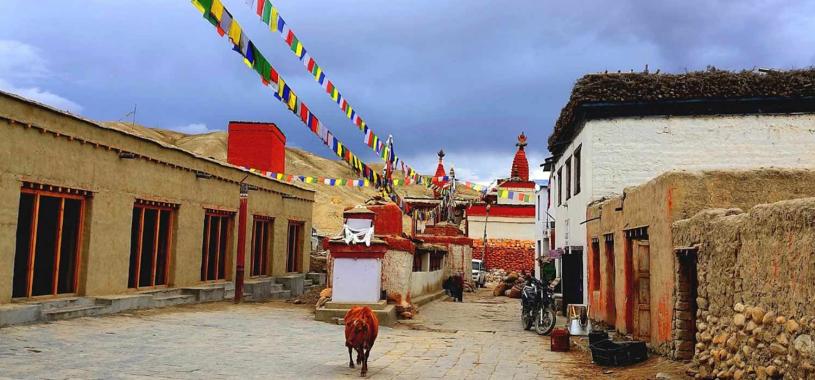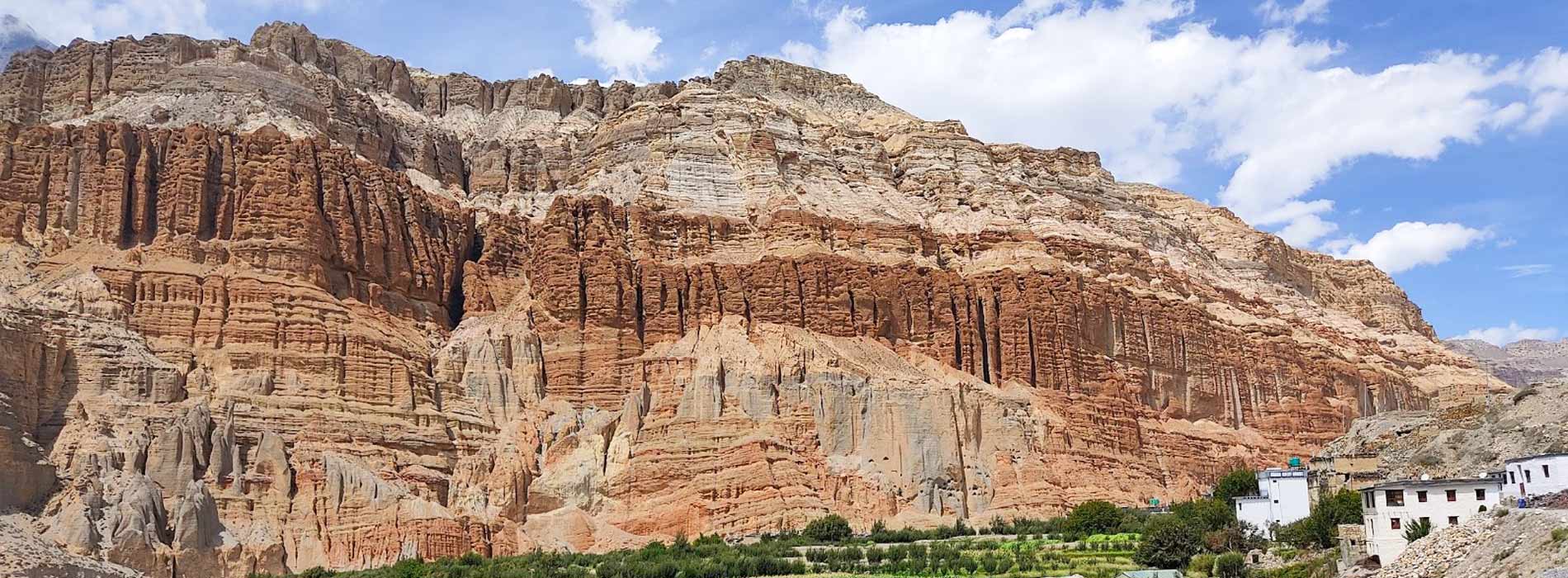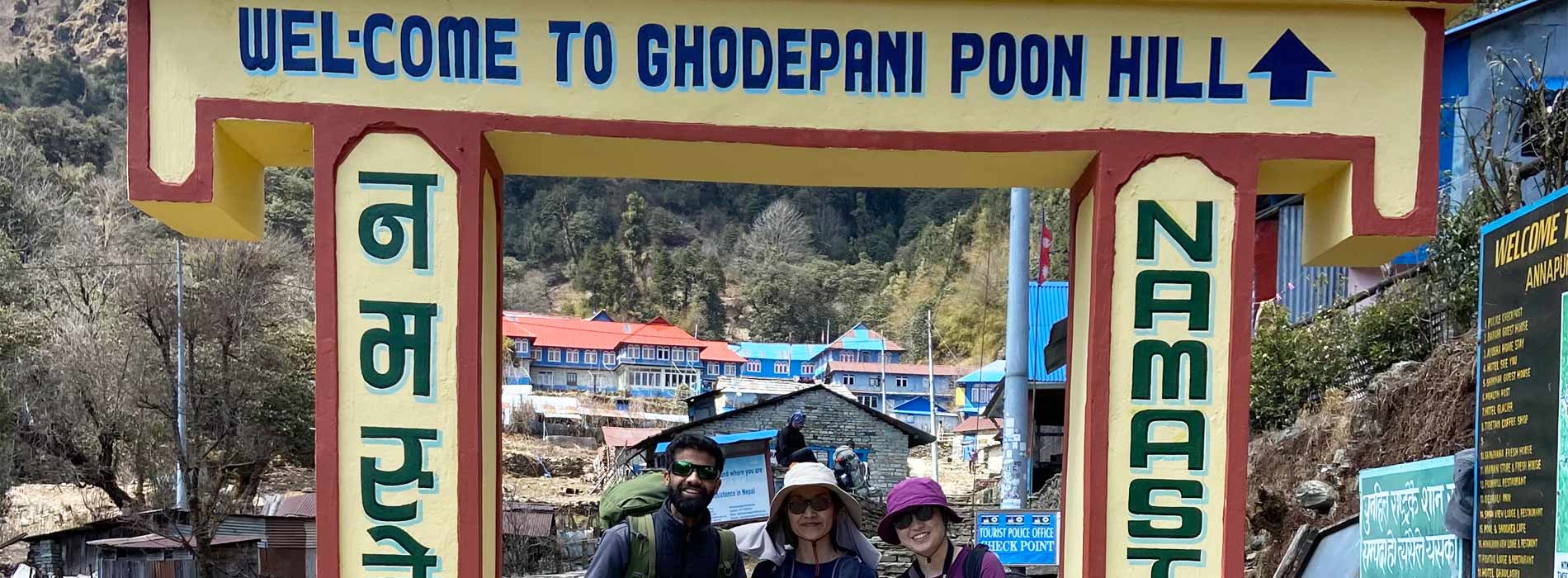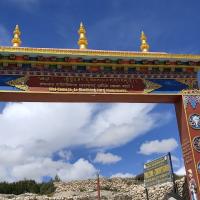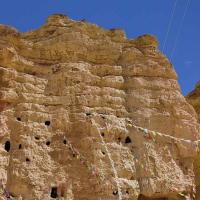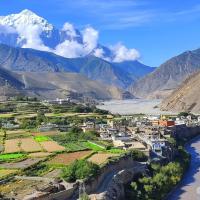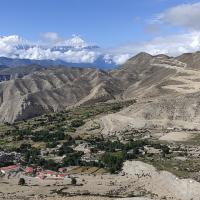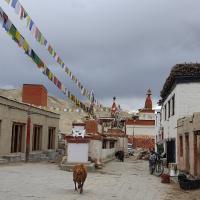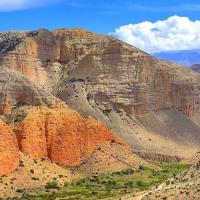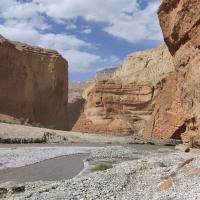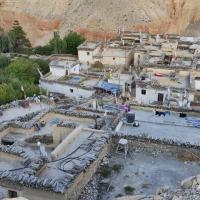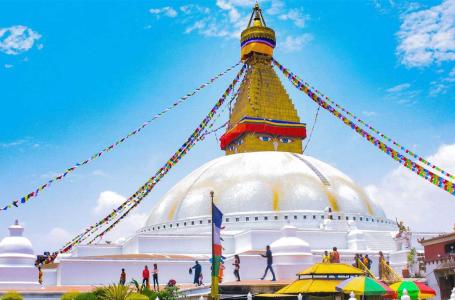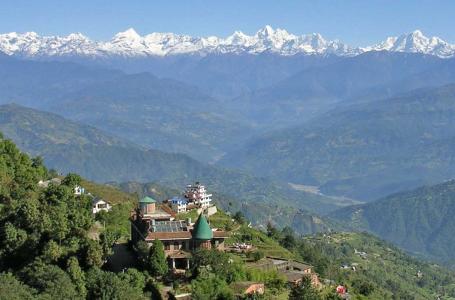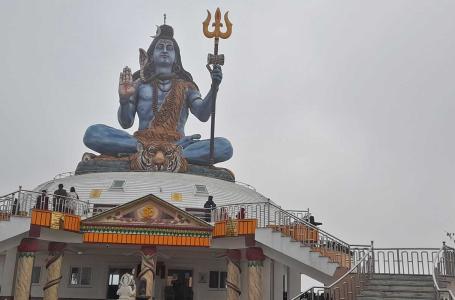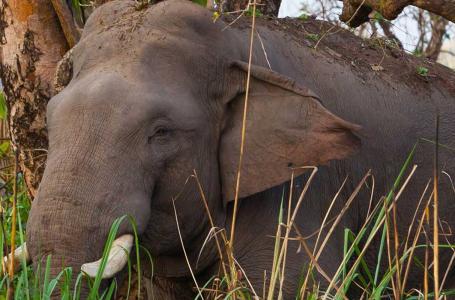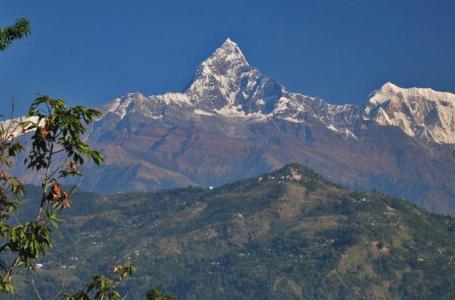- 02Pax USD 2785 pp
- 03 to 05Pax USD 2600 pp
- 06 to 10Pax USD 2450 pp
- 11 to 15Pax USD 2150 pp
Itinerary
Upon your arrival at the airport in Kathmandu, one of our representatives will pick you up and accompany you to your hotel. He will explain to you about the cultures and customs of Nepal, in brief, to help you overcome the cultural shock. Take rest in your hotel and explore the nearby food vendors to catch some crispy taste of Nepal. And most importantly, don’t miss out the Momos (Nepalese dumplings). They are worth eating.
Sightseeing in Kathmandu is, indeed, one of the best ways to create some lifelong memories. The best time to head out for sightseeing is in the early morning and the late afternoon, except in the scorching sun. Only then, you will be able to explore the centuries-old classic architectures and its godly inspired designs fully. They are beautiful, elegant and inspirational if you pay closer attention to the details of the design. At a glance, one might not be as amazed as they should be. But, only after our guides explain you the history of the structures will you realize why UNESCO listed them in the cultural heritage sites of the world. Some of these sites are Patan Durbar Square, Pashupatinath Temple, Boudhanath Stupa, Swayambhunath Stupa, etc.
Early in the morning, catch a scenic drive to Pokhara from Kathmandu. It is recommended to hire a jeep instead of traveling in Local Bus (although cheaper option). In terms of distance, Pokhara is only about 200 kilometers away. But, to reach there, it takes over 7 hours. The highway winds up around the hilly sideways and sometimes through the quaint settlements until making an appearance at Pokhara, a land of natural beauty. Because of its naturally aesthetic wonders and the high inflow of visitors, Pokhara is nicknamed as ‘the tourism capital of Nepal’.
Leave Pokhara as early as possible towards Nayapul, a 2 hours drive. Once you reach there, your trekking begins. First, cross a suspension bridge across the Modi Khola to arrive at Birethanti. This town is culturally and economically prosperous and has check posts for Annapurna Permits- ACAP and TIMS. From there, head up towards the Tikhedhunga along the jagged trail. On the way, the fascinating views of the mountains can be seen. But, the real appealing views of the Himalayas- Annapurna Range- only show up in the middle of the trek to Ulleri. This ascent through the steep stone stairs, to reach Ulleri, can be taxing though, but there is another compensating view when you reach the hilltop of Ulleri
After an easy breakfast, leave the village of Ulleri along the easy sections, no more steps now. The trail intrudes through the pleasant forest of Rhododendron and oak, just to show up in the new villages. Nangethanti is one of such wonderful stop-overs that invite magical views all around. After this village, the rest of the walk is through the forest, and eventually, you may witness the fleeting glimpses of the northern Annapurna ranges. Once you reach Ghorepani, explore the local hamlets and chew a chat with the locals.
Poonhill is the heart of the Annapurna. Leave Ghorepani as early as possible towards the Poonhill viewpoint to watch the glorious sunrise over the snowy mountains of Annapurna. This place has never been void of trekkers- mostly crowded. Secure your space and it doesn’t matter whether you climb the view tower or not, the views are literally the same. Later, come back to Ghorepani.
From Ghorepani, the path to Tatopani is pleasant and, at times, touches the dirt road. But, it’s okay as the charm of Tatopani is simply phenomenal. The hot water spring at Tatopani is believed to wash away all the disease and sins (religiously) with a single dive into the water.
From Tatopani, the real adventure of the Mustang begins. For a while, you will be walking around the hills, which are as big as the mountains in some part of the western region. Green and erect, these mountains inspire the trekkers to be strong and patient. Through the winding pathways, you will meet your first spectacular waterfall, Ruptse waterfall, gushing in its own pace. Soon after that, the views of the Dhaulagiri Himal and some parts of the Annapurna region begin to show off. Once you arrive at Ghasa, you will encounter a whole new world waiting for you.
The trek to Marpha invites a range of surprises to you. From the strange Kaligandaki gorge, the deepest gorge in the world, to the astounding views of the green mountains, everything is a surprise for a city soul. The path heads through the bridge across a small but pacing tributary. Then, the trail opens up into a grand and wide riverbed of the Kaligandaki where we will continue for a while until we make an appearance at Marpha. The houses look typically like the mountain houses, which we used to draw at a young age. They are simply outstanding to watch.
After breakfast, leave Marpha and head towards the spectacular village of Kagbeni through Jomsom. The trek begins by crossing some traditional old hamlets of Marpha. Down the riverbed of the Kaligandaki, the trail continues towards the Kagbeni. The drastic variation in the mountain views, after Jomsom, gives the inkling of entering into the arid land of Mustang. But, this change is really a surprise turn from the classic green views. Everything looks gray and brown in the mountains, with no hint of any vegetation. When you reach Kagbeni, the beautiful peaks of the Dhaulagiri and other ranges show up.
Kagbeni to Muktinath is a short and easy trek that rewards you with some of the spectacular views of the mountains and other ranges. The path is barren and accompanies wonderful arid mountains on the other side of a deep canyon. Don’t expect any greenery as you are entering the rain-shadow region of Nepal, which means these regions receive minimum or no rainfall at all. At the Muktinath, there are 108 holy taps, 2 sacred ponds, a man-sized golden statue of Lord Vishnu, and an eternal flame. Some of the sites in Muktinath may be restricted for non-Hindus, so, ask the nearby authority before stepping those forbidden sections of the temple.
Early in the morning, leave the Muktinath temple and return to Kagbeni. From there, the trail follows a gradual steep climb to the village of Tengbe. The colorful Chortens and Mani walls begin appearing in many parts of the trail to wish you good luck. When you reach Tengbe, you will see the transformation in the architecture of the houses. They look unique, like a typical mountain houses. Continue through the riverbed, by the side of the canyon, until you get greeted in the warm and pleasant village of Samar.
From Samar, the rivers of Samarkyung Khola and Ihuwa Khola show up leading us through the small forest of Juniper shrubs. Within a while, the trail crosses the Bhena La pass and descends to the village of Eklo Bhatti, meaning one house stop. From then on, the dirt road continues until Syangmochen, where the sunset views appear intoxicating. While some stay at Syangmochen to witness the sunset, we will continue to the Geling because the closer you approach the north of Nepal, the more you get surprised by the exquisite landscapes and mountains. As expected, the views from Geling are wonderful.
After having breakfast, you will join the trail between the fields towards the northwesterly direction. There is not much sharp altitude gain because of the gradual ascents. But still, you will feel the altitude effects. Within a while, Nyi La pass (4,010 m) appears the highest pass so far. Despite that, the views are not so unique to what is seen on the trail. Finally, the trail climbs over a steep red cliff to show up in the village of Ghami. Be sure to explore the Ghami Monastery, adorned with exquisite paintings of godly images.
From Ghami, the trail continues through a trio of Chortens and runs parallel to the isolated land of no greenery. About 30 mins later, a long Mani wall- the longest in Upper Mustang- shows the path ahead to a cliff. Continue the track until you arrive at a small pass, Choya La, offering better views of the landscapes. Then, the trail drops to the village of Tsarang, a classic Buddhist village. Explore the nearby oasis at Tsarang.
The name itself is enough to explain the grandeur of capital Kingdom- Lo Manthang. This city is ringed by a tall 8 ft wall, which gave it a nickname of the walled city. From the Tsarang, the trail climbs a substantial ravine which unveils the beauty signature of Annapurna I, Nilgiri, Tilicho and several other unnamed ranges. A couple of minutes away, a beautiful Sungda Chorten guides you towards the Lo La pass, the last obstacle to reach Lo-Manthang. From the top of the pass, this walled city appears clear and pristine in its habitat. Continue through the arid trail until making an appearance at the Lo Manthang.
This day is left for exploring the Lo Manthang, the capital of the Upper Mustang. The people of this region are called Lhobas, who are very much friendly although many of them don’t understand or speak English. Inside the city, there is a four-story palace, where the King Jigme Dorje Palbar Bista served the Lhobas as their leader until 2008. Besides, the prodigious cave of the Mustang is a living labyrinth of historical Nepal. Much of the cultures and traditions in Upper Mustang are inspired by Tibet, but they are the hybrid of Nepal’s purity and Tibetans culture. There are many more monasteries and Chortens to explore in the Upper Mustang.
From Lo Manthang, we will retrace our steps back to Ghami and explore the nearby fascinating sites in Ghami, including the Ghami Monastery. Later on, we will check-in to our hotel for the night stay.
From the Ghami, descend back to the Chhuksang via Samar and Chele. The route is the same as before.
Now, we turn to the southeasterly direction towards the Muktinath to witness the classic temple. There are 108 stone taps, 2 sacred lakes, and a small complex, protecting a man-sized golden statue of Lord Vishnu. An eternal flame is considered sacred by the Hindu and Buddhist devotees. Around the Muktinath, the snowy mountains form an impeccable impression. Plus, a nearby monastery at Ranipauwa adds up a diamond in the necklace. This day is indeed going to be a fascinating one.
From Muktinath, there are two ways to reach Jomsom: one via Kagbeni whiles the other via Jharkot. The older trails through Kagbeni follow a dirt road now; therefore, it is better to skip that track and head on through the traditional village of Jharkot, where the views appear much more rigorous and beautiful. Once you arrive at Jomsom, explore the marketplaces. It is worthy of every minute.
Catch an early flight to Pokhara and explore the natural sightseeing places in Pokhara. Some of the most visit sites in Pokhara are Davis Waterfall, Phewa Lake, World Peace Stupa, Mahendra cave, and Chameru cave. Besides, you might not want to miss the paragliding over the lush valleys, zip flying, and many such adventurous activities. You may as well add an extra day in the itinerary to visit the Sarangkot viewpoint.
Finally, the time has come to return to Kathmandu via the same lane you have been earlier. It is still an enjoyable ride.
Overview
Upper Mustang Trek with Ghorepani combines the best parts of the Mustang region to keep it an ideal package for those who are willing to explore the overall Kingdom (Lower and Upper) of Mustang in a single package. The basic highlights of this trek are the fabled-walled city of Lo Manthang, the 4-story palace of the Kingdom of Lo, time-honored classic caves, the viewpoint of Poonhill, the beautiful temple of Muktinath, etc. But, there is more to see. You will go through the quaint settlements of the tropical and alpine regions and feel the change in the natural architecture. Throughout the journey, you will be close to nature, and this is what makes this trek so worthy.
Mustang is a restricted region of Nepal, and only a handful of people go for it because of its expensive permits and other costs. Among those, very few can really make it around the Mustang because of the difficult terrain and altitude. For pre-knowledge about the trip, don’t expect the trail to be easy, just because you paid hundreds of dollars for it. It is worthless to interpret the information in that manner, but for sure, you will be baffled by each and every detail of the trip. It is a classic trek that involves nothing more than the ancient culture and lifestyle.
Lower & Upper Mustang Trek can be done in any season, but it is better to avoid the icy cold of winter. Contact us to know more details about the trip.
Planning:
Planning a trek to the Mustang Region of Nepal can be an exciting adventure, but it's essential to prepare thoroughly to ensure a safe and enjoyable journey. The next step in planning a trek to Upper Mustang is to determine the length of your journey. A typical Upper Mustang and Lower Mustang journey lasts 10-14 days each. Hence, combining both of the treks in the Annapurna region can be a lengthy program.
However, we have come up with a program that includes the major places of both Upper and Lower Mustang along with a trip to Ghorepani Poon Hill. This makes this program an itinerary with the best places to visit in the Annapurna region. Make a plan for your trip, including hiking days, rest days, and major sites to visit (such as Ghorepani, Lo Manthang, Ghami, Charang, and Kagbeni).
Physically prepare for the expedition by doing aerobic activities, trekking, and strength training. Because of the great altitude, acclimatization is essential. Spend a few days in Kathmandu or another high-altitude destination before starting the trip. Learn about the symptoms and prevention of altitude sickness. Acclimatization is critical, and knowing how to diagnose and handle altitude-related illnesses throughout the journey is key.
Best time to do the Upper Mustang Trek with Ghorepani:
Spring (March to May) is one of the most popular times for trekking in the Mustang and Annapurna regions. Skies are clear during this time and offer excellent visibility of the surrounding mountains, including the Annapurna and Dhaulagiri ranges. The rhododendron forests are also in full bloom, creating vibrant landscapes with colorful flowers.
Autumn (Sep to Nov) is another excellent time for trekking in the Ghorepani, Jomsom, and Upper Mustang is the peak trekking season in Nepal. You'll encounter fewer rain showers and less chance of landslides compared to the monsoon season. During this season, the skies are clear, providing stunning views of the Himalayas ranges.
Monsoon season and Summer Season (June, July, and August) are highly not recommended for the Ghorepani, Jomsom & Upper Mustang trek. Plus, the cold of the winter (December, January, and February) is unbearable for an ordinary trekker.
Food and Accommodation:
Upper Mustang trek with Ghorepani's accommodations are mainly simple teahouses or guesthouses. These are small, family-run lodges with rooms that have minimal amenities such as a bed, blankets, and common restrooms. The priority is on giving you a warm and pleasant place to relax throughout your journey. Mustang teahouses and guesthouses often provide a range of meals to keep hikers refreshed and satisfied. The menu options are fairly limited, yet they still offer a variety of possibilities. The quality of food and accommodation may differ as you ascend to higher altitudes.
But it is recommended to consult your guide for better and hygienic options.
Transportation: Upper Mustang Trek with Ghorepani
The Upper Mustang trek with Ghorepani often begins at Nayapul. If you want to fly to Pokhara, you can take a domestic airplane (30 minutes) or a tourist bus/private car to Pokhara (approximately 6-8 hours) and then go overland to Nayapul to begin your trek. We will remain in a hotel in Pokhara for the night and begin our adventure early in the morning. To go to Nayapul we will either hire a private car (shared jeep) or use a local bus. The journey may take many hours, depending on road conditions and the starting place you select. From Nayapul, Our trek finally begins. The walking routes are well-marked, and we will follow them through stunning scenery, villages, and woods until you Ulleri.
Necessary Permits and TIMS:
When trekking in the Mustang and Annapurna regions of Nepal, you'll need several permits to ensure your entry into the restricted area and to support conservation efforts. Additionally, the TIMS (Trekkers' Information Management System) card may be required, depending on your trek's specific route.
- The most crucial permit for trekking in the Upper Mustang is the Restricted Area Permit (RAP).
- Trekkers' Information Management System (TIMS) card. card is another important permit historically required for trekking in Nepal, including the Upper Mustang region. This system helps authorities maintain records of trekkers and provides essential information in case of emergencies. TIMS cards come in two types: Green for independent trekkers and Blue for those trekking in organized groups.
- (ACAP) Annapurna Conservation Area Permit might also be necessary according to the route.
NECESSARY DOCUMENTS FOR PERMITS:
- An original passport and current visa(valid for at least six months)
- One printed passport-sized photograph (required for an ACAP permit)
- Travel insurance papers (includes helicopter evacuation of up to 6000m)
Highlights
- Visit the "Forbidden Kingdom" of Lo Manthang.
- Explore Ancient Caves and Monasteries.
- Stunning panoramic view of the Annapurna and Dhaulagiri along with one of the most iconic sunrise views in Nepal.
- Explore desert-like, featuring eroded canyons, caves, and surreal rock formations in the upper Mustang.
Cost Details
- Airport pickup and drop service
- Accommodation in kathmandu Hotel Chhimeki 2night.
- All food during the trek (B, L, D included)
- Transportation costs: Comfortable Drive from Kathmandu to Trekking Starting and Ending Point
- Highly experienced Government licence holder English speaking trekking guide
- Trekking permits:Upper Mustang Special Permit (Ten days only)
- Annapurna Conservation Permit and TIMS card
- First aid medical box.
- T-shirt, Duffel Bag and Trekking Map with company logo.
- Rescue Management Service.
- All Tax.
- Farewell Dinner
- All kinds of Drinks
- Visa fee to enter Nepal
- International flight tickets
- Extra night accommodation and meal costs in Kathmandu due to any change in the scheduled itinerary.
- Porter (1 porter for 2 trekkers with a max load of 20kg).
- Travel insurance/ Rescue operation costs
- All personal expenses.
- All required trekking gears like sleeping bags and down jacket (available on rent).
- Tip for guide and porters
Equipment List
- Woolen shirts and thick sweaters.
- Jackets (Fiber or down).
- Waterproof jacket with hood or poncho.
- Tracksuit, Track shoes and Trousers.
- Thermal Underwear and Thermal coat.
- 2pair of loose fitting long shorts/ skirts.
- Pair of Gloves and sandals.
- Woolen hat and Long sleeved shirt.
- Light weight walking boots.
- 2 pairs of thin socks and 2 pair of woolen socks.
- Snow glasses and sunglasses.
- Trekking Sticks and Duffle bag or kit bag to carry to gear while trekking.
- Some (small/large) plastic bags to separate clean clothes from dirty ones and some smaller plastic bags to dispose garbage.
- Daypack bag to carry your personal requirements.
- Water Bottle, water purifying tablets.
- Towels, Umbrella (optional).
- Head lamp, Binocular, Camera, trekking map and compass, reading materials, pencil, rubber, pen, notebook and moisturiser for lip, face body


